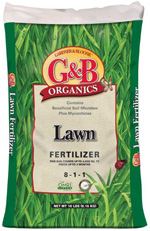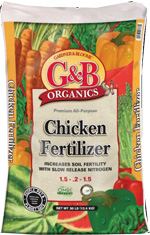|

      
|
 |
Featured Quotation: "Knowledge consists of knowing that a tomato is a fruit, and wisdom consists of not putting it in a fruit salad." |
 |
 |
 Deciduous Fruit Trees are Here! Bareroot Roses are Here, too! |
 |
One of the plants that we always look forward to after a long winter is the forsythia. This early blooming plant is a focal point of early spring, heralding the warming months with a brilliant display of golden yellow blooms. Forsythias bloom before they leaf out, and during full bloom the bare stems are completely covered from base to tips. In early spring, they become the focal point of the landscape, then blend in well with other plants when the rich green foliage emerges after blooming. These deciduous shrubs are native to eastern Asia, where they have been used in Chinese medicine for their antiseptic effect in treating wounds. They are fast growing, with dwarf varieties reaching 4-5 ft high and almost as wide, while taller growing varieties can reach 8-10 ft high and half as wide. The plants have great structure with an upright arching growth habit that has a somewhat fountain-like effect. Forsythias not only look great in the landscape, but their branches also are perfect for flower arrangements, thanks to the uniformity of blooms on the branches. They are frost-hardy and easy to grow in well-drained fertile soil. They grow best in a full sun location, so are often used as a living privacy fence after they have fully leafed out. The taller varieties make great individual specimens in the landscape, and can also be used for erosion control on slopes. Most people prefer the somewhat wild natural look of forsythias, but they can be shaped with regular pruning. This is best done after they have finished blooming, because they flower on the prior year's growth (pruning either too late or too early interrupts the growth/blooming cycle). But no matter how you shape this hardy plant, it will reward you with years and years of spectacular color every spring! |
 |
|
One of the true pleasures home gardeners can experience is growing their own fruit. And with a little planning, it's possible to have an extended harvest season. Even gardens that are short on space can have an extended harvest if the proper planting techniques are used. The key to an extended or year-round harvest is understanding the ripening times of fruit and citrus trees. Most citrus start to ripen in winter, with mandarins coming first and then followed by lemons, limes and oranges through March and April. But most lemons produce a steady crop of fruit year-round. Thanks to some new Australian and New Zealand citrus cultivars that get confused by the hemispheres, you can have citrus in late summer and fall. Then you can always count on kumquats for a November-to-January harvest. With deciduous fruit trees you can start with early varieties of apricots that ripen as early as mid-May, followed by a crop of cherries in June. The summer months bring in nectarines, peaches, plums and pluots from mid-June through August. After that, apples, pears and persimmons ripen in September and October. Figs will bear fruit from early summer to late fall. If you are short on space, consider planting more than one variety in the same hole. Just make sure to plant trees with similar growing habits. Apples, cherries and pears tend to be the fastest and highest growers. Since citrus require more sun to ripen than deciduous fruit trees, make sure they get the sunniest locations. Most deciduous fruit trees will produce a great tasting crop of fruit as long as they receive at least 5-6 hours of sunlight during the growing season. Citrus prefer 6-8 hours of sunlight. The final secret to getting great tasting fruit is to wait until the fruit has ripened completely on the tree. This allows the sugar content to be at its highest level. The problem with most store-bought fruit is that it is harvested long before it is ripe in order to stand up to the rigors of shipping. The fruit never develops the same intense flavor on a shelf as it does on the tree. Now is a great time to buy fruit trees. We have a good selection of citrus and deciduous fruit trees. If you have any questions, our staff of fruit tree experts will be happy to help you plan your year-round fruit tree garden! |
 |
|
If you are a berry lover, you can't possibly have a garden without dedicating a space to grow delicious homegrown strawberries. Some people even go as far as saying they are the best of all the berries. What is unique about the strawberry (actually a member of the rose family) is that it is the only fruit with seeds on the outside rather than the inside. The delicate but great-tasting heart-shaped berry has always been associated with love, passion, purity, and healing. Legend has it that if you break a double strawberry in half and share it with a member of the opposite sex, you will fall in love with each other. And speaking of legends and folklore, locals in some parts of Bavaria still practice the annual rite - each spring - of tying small baskets of wild strawberries to the horns of their cattle as an offering to the elves. They believe that the elves, (who are known to be passionately fond of strawberries - what good taste they have), will help to produce healthy calves and an abundance of milk in return. Strawberries are also prized for their medicinal purposes and health attributes. Ounce for ounce, strawberries have more Vitamin C than citrus fruit and have been associated with lowering cholesterol, easing symptoms of gout and digestion problems and lowering the risk of certain types of cancer. Strawberries are generally divided into three groups: spring bearing, everbearing, and day-neutral. The fruits of day-neutral plants and everbearers are usually smaller than the fruits of the spring-bearers. Spring-bearing strawberries generally produce a crop during a 2-4 week period in the spring. Ever-bearing strawberries produce three periods of flowers and fruit during the spring, summer, and fall - while day neutral strawberries will produce fruit throughout the growing season. Strawberries prefer the sun but do tolerate some shade. They can be used as an edging plant or a groundcover. Their major requirement is good drainage, so they'll benefit from being planted in mounded soil, terraced beds, barrels or other types of containers. They can be grown indoors, even, in a sunny window or with supplemental lighting, which makes them a great candidate for starting indoors in cold areas. We invite you to discover the sensational flavor of homegrown strawberries! Strawberry Planting and Care Instructions Placing plastic sheeting underneath the foliage will help keep the soil warm and weed-free. It also deters slugs, snails and other crawling insects from feeding on foliage and berries. Water bedding plants using drip irrigation or by flooding trenches between the mounds or terraces. Water plants in containers under the leaves. Keep them healthy during the fruiting season by feeding with a fertilizer which is low in nitrogen and will promote more bud growth and fruit. |
 |
|
What's the best time to spray my peach and nectarine trees to prevent peach-leaf curl? Answer: Peaches and nectarines should actually be sprayed 3 times each winter to prevent peach-leaf curl. The first (and most important) time to spray is in fall when about half the leaves have fallen. We recommend a combination of a copper spray with a spreader sticker. The first spray should also include dormant spray oil to kill any insects hoping to over-winter. The key is to make this first application before winter storms and while there is still some foliage to absorb the spray. The second application should be made at full dormancy in mid-winter. The third and final application should be made during pink bud swell, but prior to opening of blooms. (We recommend staying upwind from the spray unless you are planning to audition for the Blue Man Group.) |

 |
Written content © Garden Partners LLC, or respective authors. All Rights Reserved. Privacy Policy. All written content contained in this site is protected by United States copyright law and may not be reproduced, distributed, transmitted, displayed, published, or broadcast without prior written permission of Garden Partners, LLC. You may not alter or remove any trademark, copyright or other notice from copies of the content. |



